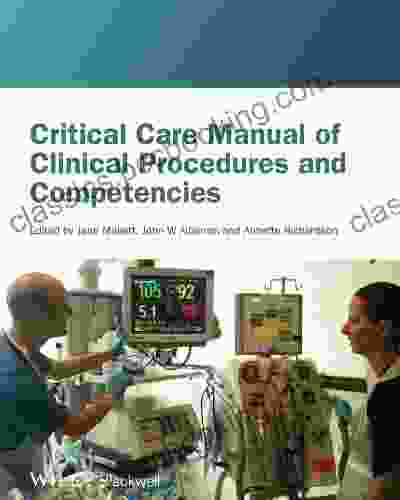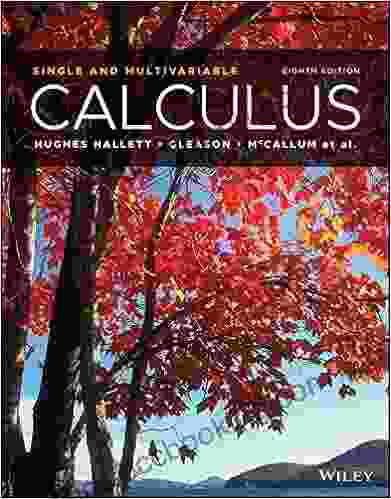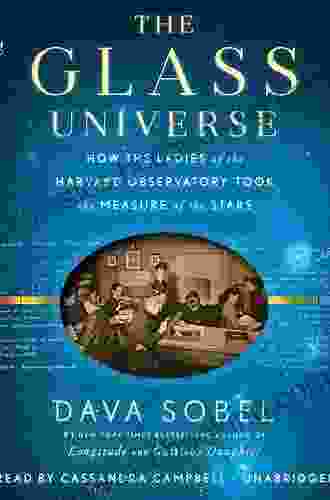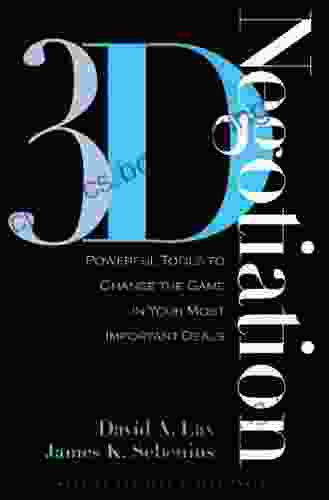How The Ladies Of The Harvard Observatory Took The Measure Of The Stars

4.5 out of 5
| Language | : | English |
| File size | : | 16759 KB |
| Text-to-Speech | : | Enabled |
| Enhanced typesetting | : | Enabled |
| Word Wise | : | Enabled |
| Print length | : | 332 pages |
| Screen Reader | : | Supported |
In the early 1900s, women were not allowed to attend Harvard College. But they could work at the Harvard Observatory, where they were assigned the task of measuring and classifying the stars.
These women, known as the "Harvard Computers," made a significant contribution to astronomy. They developed new ways to classify stars, and they discovered new stars and galaxies. Their work helped to lay the foundation for modern astronomy.
One of the most famous Harvard Computers was Annie Jump Cannon. Cannon developed a system for classifying stars based on their spectra. This system is still used today, and it has helped astronomers to understand the evolution of stars.
Another famous Harvard Computer was Henrietta Swan Leavitt. Leavitt discovered a relationship between the period of a variable star and its luminosity. This discovery helped astronomers to measure the distance to stars, and it also helped to lead to the discovery of the expanding universe.
Cecilia Payne-Gaposchkin was another groundbreaking Harvard Computer. Payne-Gaposchkin earned a doctorate in astronomy from Radcliffe College, and she became the first woman to earn a doctorate in astronomy from an American university.
Payne-Gaposchkin's dissertation, which she completed in 1925, was a groundbreaking study of the composition of stars. She showed that the stars are mostly made of hydrogen and helium, and she also discovered that the abundance of heavier elements in stars varies.
The work of the Harvard Computers helped to change the course of astronomy. They made significant contributions to our understanding of the stars and the universe, and they helped to pave the way for women in science.
Recommended Reading
- How The Ladies Of The Harvard Observatory Took The Measure Of The Stars by Dava Sobel
- The Measure of the Universe by Dava Sobel
- Harvard Computers on Britannica.com
**Alt attribute for image:**
A group of women working at the Harvard Observatory in the early 1900s.
4.5 out of 5
| Language | : | English |
| File size | : | 16759 KB |
| Text-to-Speech | : | Enabled |
| Enhanced typesetting | : | Enabled |
| Word Wise | : | Enabled |
| Print length | : | 332 pages |
| Screen Reader | : | Supported |
Do you want to contribute by writing guest posts on this blog?
Please contact us and send us a resume of previous articles that you have written.
 Book
Book Novel
Novel Page
Page Chapter
Chapter Text
Text Story
Story Genre
Genre Reader
Reader Library
Library Paperback
Paperback E-book
E-book Magazine
Magazine Newspaper
Newspaper Paragraph
Paragraph Sentence
Sentence Bookmark
Bookmark Shelf
Shelf Glossary
Glossary Bibliography
Bibliography Foreword
Foreword Preface
Preface Synopsis
Synopsis Annotation
Annotation Footnote
Footnote Manuscript
Manuscript Scroll
Scroll Codex
Codex Tome
Tome Bestseller
Bestseller Classics
Classics Library card
Library card Narrative
Narrative Biography
Biography Autobiography
Autobiography Memoir
Memoir Reference
Reference Encyclopedia
Encyclopedia Davey Johnson
Davey Johnson Deborah Clark
Deborah Clark Dawn Huebner
Dawn Huebner Danny Garcia
Danny Garcia David H Maister
David H Maister David Watson
David Watson David Wolff
David Wolff Debbie Levy
Debbie Levy David Hoffeld
David Hoffeld Dario Golizia
Dario Golizia Dc Swain
Dc Swain David Sammel
David Sammel De Andrea
De Andrea Dean A Kowalski
Dean A Kowalski David Sobotta
David Sobotta David Harvey
David Harvey Danny Fingeroth
Danny Fingeroth David Milgrim
David Milgrim David Conyers
David Conyers Darien Gee
Darien Gee
Light bulbAdvertise smarter! Our strategic ad space ensures maximum exposure. Reserve your spot today!

 Eugene PowellEmpowering Healthcare Professionals with Critical Care Manual of Clinical...
Eugene PowellEmpowering Healthcare Professionals with Critical Care Manual of Clinical...
 Jaylen MitchellThe Ancient Language of Sacred Sound: Unlocking the Secrets of Healing,...
Jaylen MitchellThe Ancient Language of Sacred Sound: Unlocking the Secrets of Healing,... Marcel ProustFollow ·3.5k
Marcel ProustFollow ·3.5k Zachary CoxFollow ·15.9k
Zachary CoxFollow ·15.9k Manuel ButlerFollow ·2.1k
Manuel ButlerFollow ·2.1k Cooper BellFollow ·2.1k
Cooper BellFollow ·2.1k Dawson ReedFollow ·5.2k
Dawson ReedFollow ·5.2k Edwin BlairFollow ·14.6k
Edwin BlairFollow ·14.6k J.D. SalingerFollow ·12.3k
J.D. SalingerFollow ·12.3k Patrick HayesFollow ·6.2k
Patrick HayesFollow ·6.2k

 Cameron Reed
Cameron ReedHow to Know When Language Deceives You
Unmasking the Power of...

 Robbie Carter
Robbie Carter50 Things To Know About Planning Home Schooling...
: The Power of Hands-On Learning Embarking...

 Julio Cortázar
Julio CortázarCalculus: Single and Multivariable, 8th Edition — The...
Calculus is the...

 Jaime Mitchell
Jaime MitchellBunnicula and Friends: A Spooktacular Tale of Mystery and...
In the quaint little town of Celeryville,...

 Josh Carter
Josh CarterPeppa Easter Egg Hunt: Join Peppa Pig on an...
Get ready for...

 Donovan Carter
Donovan CarterBoy Called Dickens: A Journey into the Childhood of a...
Delving into the...
4.5 out of 5
| Language | : | English |
| File size | : | 16759 KB |
| Text-to-Speech | : | Enabled |
| Enhanced typesetting | : | Enabled |
| Word Wise | : | Enabled |
| Print length | : | 332 pages |
| Screen Reader | : | Supported |








